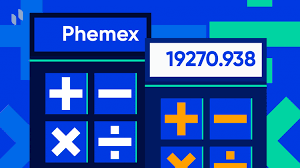Think market cap is just price times supply? Think again—hidden numbers could completely rewrite a coin’s true worth. Here’s why it matters.
Market capitalization, or market cap, is one of those terms that get tossed around a lot in finance and crypto circles. But how exactly is market capitalization calculated? Let’s break this down like your high school math teacher should have, but didn’t.
At its core, market capitalization is simply the total value of a company’s or cryptocurrency’s circulating supply, multiplied by its current price per unit. Sounds easy? It is. But the devil is in the details.
“Market capitalization = Current Price × Circulating Supply”
Let’s start with circulating supply. This is the number of tokens or shares that are actually available to the public and circulating in the market. It does not include coins locked up, reserved, or held by insiders.
Confusing enough? Hang on. There’s also something called max supply, which is the maximum number of tokens or shares that will ever exist. This number is usually higher than the circulating supply.
The difference causes all sorts of head-scratching among investors who try to understand the token’s true value. To add to that, there’s also the fully diluted valuation (FDV). That’s the market cap if all tokens, including those not yet in circulation, were in circulation at today’s price.
Fully Diluted Valuation = Current Price × Max Supply
This sounds straightforward, but it can dramatically inflate the perceived size and value of a project if you don’t pay attention. So why bother with this extra math? Because a project with a small circulating supply but a massive max supply might look like a market cap giant — on paper only.
CoinGecko and CoinMarketCap are two authority websites that help traders make heads or tails of this by showing both circulating and max supplies alongside market caps and FDV. They serve as indispensable tools for anyone dabbling in tokens or stocks.
According to Chainfocus, an expert in blockchain data and analytics, market cap is the single most common indicator used to rank cryptocurrencies. But that ranking can shift not only because prices change but also because circulating supply changes — say, if coins are unlocked from reserves or new tokens are minted.
So next time you see a cryptocurrency jumping several ranks in the “top 100,” don’t be fooled. It might not mean people suddenly became obsessed with it. It could be the circulating supply changed. Supply dynamics matter just as much as price movements, if not more.
In short, market cap is a quick math game — multiply the number of tokens available by their price. But if you want to get the full picture, you’ll need to dig into circulating versus total supply, and what fully diluted valuation means for your interpretation of the numbers.
Here are some solid sources if you want to nerd out further:
- CoinGecko – Industry leader on crypto metrics including market cap, supply data, and rankings.
- CoinMarketCap – Another major data aggregator offering detailed token statistics and financial snapshots.
- Chainfocus – Blockchain insights and analytics provider with a strong focus on market cap mechanics and tokenomics.





